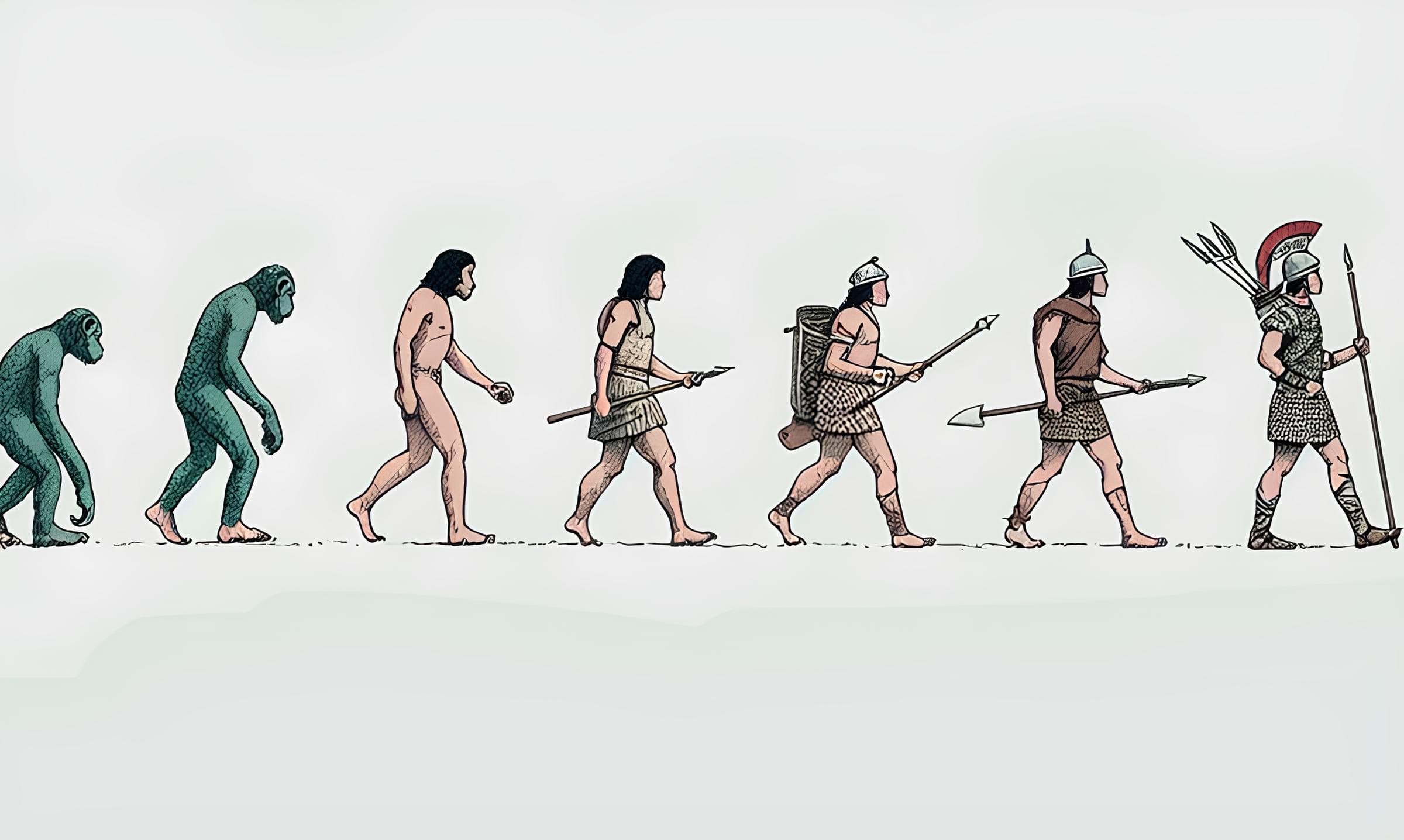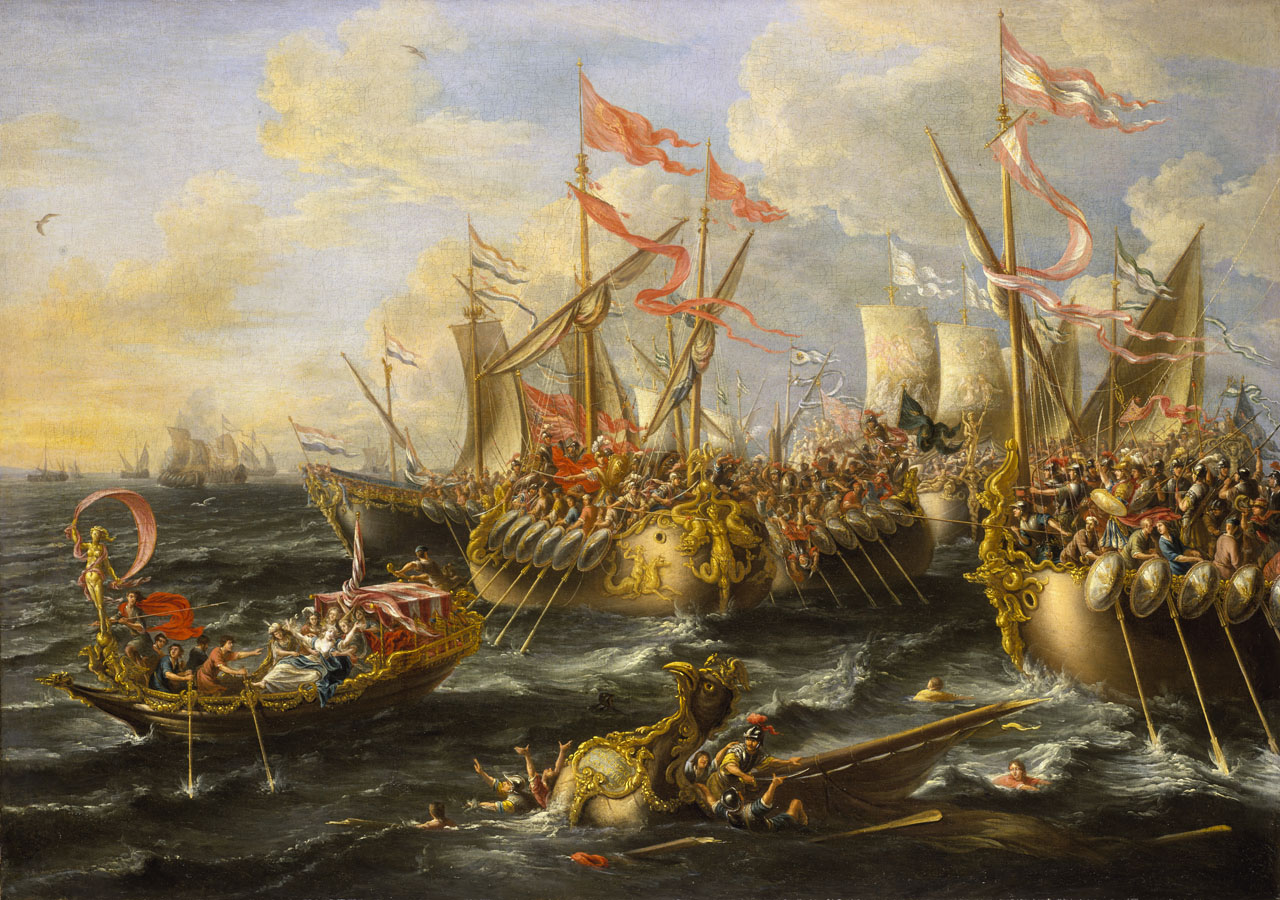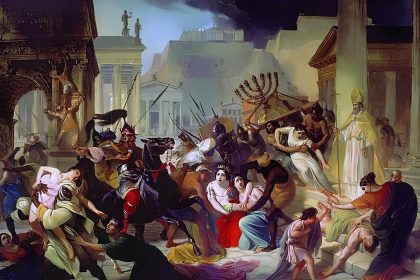Carthage (an ancient city in modern-day Tunisia) was the center of a vast empire that included North Africa and Sicily; to the north, Rome had just completed its conquest of the southern part of the Italian peninsula. These two superpowers squared up against one another, and the first battle between them was fought on the island of Sicily. Between 264 and 149 BC, Rome fought and won three separate battles against Carthage known as the Punic Wars. Only when Carthage was destroyed in 146 BC were the Punic Wars over. Rather than just being a series of territorial conflicts, the Punic Wars had far-reaching effects on the culture and government of the people who were engaged. Also, they were the first step in Rome’s imperialistic invasion of the whole ancient world.
First Punic War – Conquest of Sicily (264 BC to 241 BC)
In 272 BC, after taking Taranto, Carthage advanced over Sicily from Rome to the Straits of Messina. The fight began when King Hieron of Syracuse attacked the city of Messina, which was ruled by the Campanian mercenaries known as the Mamertines. When things become tough, they reach out to Carthage for assistance before eventually looking to Rome. In 264 BC, when Rome was called upon to help Sicily, the Romans sent soldiers swiftly. Rome used the opportunity to go to war with Carthage in an effort to conquer the whole island.
Capturing Agrigento in 262 BC marked the beginning of what would become the first Punic war and would be followed by a series of naval engagements. The Romans did indeed construct their first sizable navy around 260 BC. However, neither side could claim a conclusive victory in their intermittent conflicts prior to 241 BC. Regulus, a Roman consul, arrived in North Africa in 256 BC, yet this event didn’t really change much. The Carthaginians captured him. The Roman fleet destroyed the Carthaginian navy off the Aegae Islands in 241 BC, thereby ending the war. Carthage capitulated because it couldn’t reassemble its navy in time. Then it had to give over Sicily and pay huge war reparations to its foe.
Second Punic War: The Hannibal effect (218 BC to 202 BC)
However, the struggle left Carthage so bankrupt that it could no longer pay its mercenary obligations in Numidia or Libya, even if it managed to hold on to its African provinces. They then brutally rose up against the oligarchic government in power, which bears some culpability for the loss due to its own avarice and brutality. Rome pounced on the unrest in 237 BC, conquering Corsica and Sardinia.
The mighty Carthaginian Barcids had no intention of handing up their city’s prominence. And thus, the war hero Hamilcar Barca put down the uprising and set about rebuilding the army. He embarked on a campaign to take over Spain, which offered not only wealth but also a ready supply of soldiers. And in 219 BC, his son Hannibal Barca also succeeded in seizing Saguntum (modern Sagunto). The Second Punic War began the moment Rome’s ally in Spain was taken.
Hannibal, in an effort to vanquish his foe, attempted to break up the Italian confederation and isolate Rome from its allies. He led an army of soldiers and elephants through the Pyrenees, across Gaul, where he won the loyalty of the Cisalpine Celts, and finally over the Alps into Italy. Successes in Ticino, Trebia, Lake Trasimene (217 BC), and Cannae followed quickly (216 BC). The paucity of resources, however, prevents it from maintaining a seat in Rome, and the country was becoming marginalized as a result (Rome even manages to break the alliance which it had obtained with Philip V of Macedonia).
He went into hiding in Capua, where his soldiers would inevitably fall in to the town’s charms, as legend had it. Meanwhile, Roman commander Scipio retaliated by defeating the Carthaginians in Spain before marching his troops into North Africa in 204 BC. At that point, the dwindling Carthaginian forces beckoned Hannibal back to their side. The Numidian monarch, Masinissa, had formed an alliance with Scipio the African, so even the triumphant general’s homecoming did not give them the upper hand. The Second Punic War ended with Hannibal’s devastating loss at the Battle of Zama in 202 BC, establishing Rome as the preeminent power in the Western Mediterranean.
Third Punic War: The destruction of Carthage (149 BC to 146 BC)
After losing Spain and becoming a client state to Rome, Carthage slowly but surely regained its former economic might. For Rome, which had been trying to battle Antiochus III, an ally of Hannibal’s, and impose its dominance in Macedonia since the conclusion of the second war (200 BC), this might provide a new threat. Furthermore, a democratic political movement resisted the king of Namibia and was expected to spark major revolts in the city about 150 BC.
Rome was concerned, and Censor Cato the Elder didn’t miss a beat in making the case that Carthage had to be annihilated. Yet the Carthaginian people were not yet ready to capitulate in the face of the Roman invasion led by consul Scipio Aemilianus in 149 BC. This was the reason the siege of Carthage lasted for so long. Scipio Aemilianus did not gain entry to the city until 146 BC, and even then only by using brute force. When he was done pillaging, he gave the order to have the whole building destroyed. Those who managed to stay alive were eventually bought and sold as slaves.
Results of the Punic Wars
The fall of Carthage marked the last chapter of the Punic Wars. Years of fighting flipped the Mediterranean region on its head. Rome expanded her territory to include Spain, invaded Macedonia, and annexed Sicily and Sardinia (227 BC), Carthage (146 BC), and Greece (146 BC).
The Punic Wars did not begin as a manifestation of an imperialist intent but rather as a response to the need of defending or acquiring strategically important areas. The Republic finally decided to crush Carthage’s supporters and expand its frontiers after the second battle, after it had exhausted all other options. As a result of the Punic Wars, Rome became the dominant power in the Mediterranean and began its march toward empire.
TIMELINE OF THE PUNIC WARS
264 BC-Beginning of the first Punic war
After the Mamertines, the rulers of Messina, came under siege from Hieron of Syracuse, the Romans sent an army to defend the island. To cease their extortion of Sicily’s bordering cities, the latter group sought to have them expelled. After appealing to the Carthaginians for aid, the beleaguered Mamertines eventually sought it from Rome. Due to the coming of Roman forces, Hieron and the Carthaginians formed an alliance, only to be soundly beaten. The Roman victory here initiated the first Punic conflict.
262 BC-Capture of Agrigento by the Romans
Romans were concerned about the concentration of military troops in Agrigento after their first triumph over Syracuse and Carthage two years earlier. They resolved to capture the place to avoid retaliation from their adversaries. Since Rome’s last triumph, several Sicilian towns have sided with the Romans. The first Punic war was truly launched.
260 BC-The victorious Roman fleet at Mylae
After the Romans’ first ground assaults on Carthage failed, they used a wrecked Carthaginian ship as the basis for their first large-scale war fleet. In the waters around Mylae, a city on Sicily’s northern coast, they saw minimal resistance from their foes under the leadership of consul Gaius Duilius. Despite their success, they were unable to capture the island.
259 BC-Rome Invades Corsica
Corsica was conquered by Rome in 259 B.C. as part of their campaign against Carthage during the Punic wars. Despite the seeming ease with which the Romans conquered the island, they were met with a fiercely resistive indigenous people. It will take the mighty Roman Republic at least 10 expeditions over the course of a century to bring peace to the island of Corsica.
256 BC-The Punic War spreads in Africa
It was Atilius Regulus, the Roman consul, who resolved to surprise the Carthaginians by taking the war to Africa. It’s been eight years, and neither side had achieved any success in this fight. Furthermore, this assault had the potential to swing the odds. At Cape Bon, a prosperous Carthaginian territory of Africa, Regulus and his army landed. As the Punics continued to suffer enormous casualties, the Roman consul was ultimately captured and taken prisoner.
254 BC-Capture of Palermo
Despite fierce resistance, the Romans conquered Palermo, the capital of Carthaginian Sicily.
249 BC-The Carthaginians were victorious at Drepanum
The western Sicilian city of Drepanum (Drepana or modern-day Trapani) was the site of a naval battle that the Carthaginians won.
241 BC-End of the first Punic war
The Romans finally conquered Sicily after 23 years of fighting. After the naval invasion of consul Lutatius Catulus on the Aegean Islands, the Carthaginians were ultimately obliged to give up the area to their adversary, despite the efforts of the youthful commander Hamilcar Barca. Carthage would also have to pay the Romans a hefty sum as recompense for the territory it lost.
219 BC-Capture of Saguntum by Hannibal
Hannibal, son of Hamilcar Barca, led the Carthaginian army that conquered Saguntum, Spain, from the Romans. Thus, Hannibal carries on his father’s mission of reestablishing Carthaginian hegemony in order to exact retribution on Rome. His ultimate goal was to break the other cities’ affiliations with Rome. So he planned to invade Italy from Spain and southern France. It was inevitable that the seizure of Saguntum would spark a renewed Punic conflict.
218 BC-Hannibal launches the second Punic war
Hannibal led his Carthaginian army over the Alps into Italy. His army included mercenaries and elephants. At Trebia, he dealt a severe blow to the Roman troops. There were two major triumphs in the following two years: at Lake Trasimeno and at Cannes.
June 23, 217 BC—Victory Hannibal’s at Lake Trasimene
Hannibal led his Carthaginian army through the Alps and into southern Italy, where he planned to assault Rome. Flaminius, the consul, decided to go after Hannibal, although the latter was aware of this. On the hilltops above Lake Trasimeno, he promptly laid a trap for his adversary. Flaminius’s army was wiped out after being caught off guard. Those that make it through the ordeal were the ones who end up being captured, killed, or put on trial for treason. But Hannibal gave up on his march on Rome; he was not prepared to launch a siege just yet.
August 2, 216 BC—The Battle of Cannes
Hannibal Barca and his Carthaginian army defeated Roman forces led by consuls Paul Emilio and Gaius Terentius Varro at the city of Cannae in southern Italy, scoring a huge victory against the Romans. Roughly 50,000 Romans were killed or captured in this conflict. Following such a string of wins, certain towns, like Taranto, Syracuse, and Capua, broke their allegiance with Rome.
October 19, 202 BC—End of the Second Punic War
Scipio’s victory in Spain were a turning point in the Second Punic War. In 204 B.C., he arrived in North Africa and resumed his expedition. Hannibal was unable to launch an assault on Rome in Italy. Carthage took the danger seriously and chose to send Hannibal back to Africa once the Roman commander arrived. But Masinissa, the ruler of Numidia, was a partner of Scipio’s.
After the Romans won a decisive victory in the battle of Zama in 202 BC, the second Punic war was over. Eventually, Carthage gave up. It paid an enormous price to Rome, ceding control over most of what was now Spain and the Mediterranean. The Roman commander was given the moniker “Scipio the African” after his triumphant return to the capital. For his part, Hannibal opted for exile. In 183 BC, with the Romans closing in, he took his own life.
149 BC-Scipio Emilian initiates the third Punic war
After the second Punic war, Carthage’s economy recovered, and Rome once again began to suspect it. Scipio Aemilianus also set out to completely wipe off the city, which sparked the third Punic War. After a three-year siege, he finally managed to storm Carthage and take the city. The growth of a powerful democratic policy, which unsettled Rome, and strained ties between Carthage and the Numidian monarch, Masinissa, were the primary explanations for the third war. Rome could launch an attack with the excuse that the other side was not abiding by a treaty they had already signed.
146 BC—Destruction of Carthage
Scipio Aemilianus of Rome entered Carthage after a three-year siege. The city was totally destroyed, and the surviving population was sold into slavery. By absorbing former Carthaginian territory, the Romans created the province of Africa. The third and last Punic war concluded with this.
Bibliograpy:
- Briscoe, John (2006). “The Second Punic War”. In Astin, A. E.; Walbank, F. W.; Frederiksen, M. W.; Ogilvie, R. M. (eds.). The Cambridge Ancient History: Rome and the Mediterranean to 133 B.C. Vol. VIII. Cambridge: Cambridge University Press. pp. 44–80. ISBN 978-0-521-23448-1.
- Carey, Brian Todd (2007). Hannibal’s Last Battle: Zama & the Fall of Carthage. Barnslet, South Yorkshire: Pen & Sword. ISBN 978-1-84415-635-1.
- Casson, Lionel (1995). Ships and Seamanship in the Ancient World. Baltimore: Johns Hopkins University Press. ISBN 978-0-8018-5130-8.
- Lazenby, John (1996). The First Punic War: A Military History. Stanford, California: Stanford University Press. ISBN 978-0-8047-2673-3.
- Lazenby, John (1998). Hannibal’s War: A Military History of the Second Punic War. Warminster: Aris & Phillips. ISBN 978-0-85668-080-9.
- Liddell Hart, Basil (1967). Strategy: The Indirect Approach. London: Penguin. OCLC 470715409.
- Briscoe, John (2006). “The Second Punic War”. In Astin, A. E.; Walbank, F. W.; Frederiksen, M. W.; Ogilvie, R. M. (eds.). The Cambridge Ancient History: Rome and the Mediterranean to 133 B.C. Vol. VIII. Cambridge: Cambridge University Press. pp. 44–80. ISBN 978-0-521-23448-1.
- Carey, Brian Todd (2007). Hannibal’s Last Battle: Zama & the Fall of Carthage. Barnslet, South Yorkshire: Pen & Sword. ISBN 978-1-84415-635-1.
- Castillo, Dennis Angelo (2006). The Maltese Cross: A Strategic History of Malta. Westport, Connecticut: Greenwood Publishing Group. ISBN 978-0-313-32329-4.






